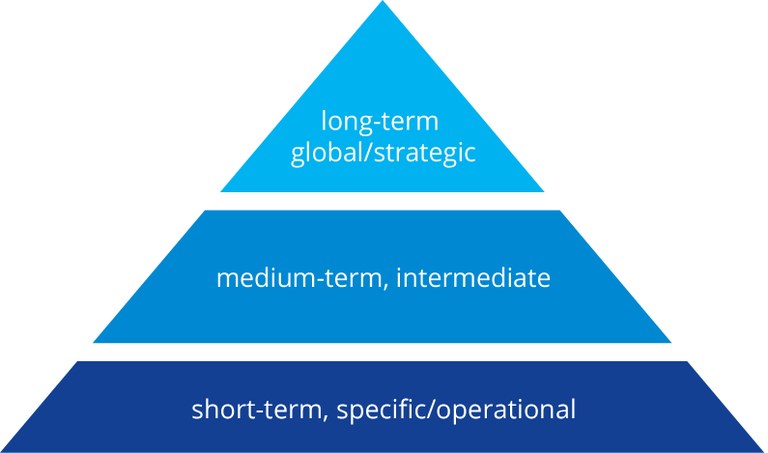Objectives
Tip
As we move from the generic to the specific level, objectives need to be SMART:
- Specific: be precise and concrete enough to avoid varying interpretation.
- Measurable: refer to a desired future state (as compared to the baseline situation) so that it is possible to see whether the objective has been achieved or not.
- Accepted, understood and interpreted similarly by all who are expected to take responsibility for achieving them.
- Realistic: ambitious but they should also be achievable.
- Time-dependent: their achievement should be related to a fixed date or time period.
Tip
The objectives are usually found in the P2P Strategic Research and Innovation Agenda or similar strategic documents. They may not always be articulated into long, medium or short-term objectives. They can still be categorised as such as shown in the following example.
Guiding questions for identifying the Challenges addressed and developing an Objectives Hierarchy
- Why was the P2P established? Which challenge, problem, or situation does it aim to address?
- What are the main assumptions about the way the specific challenge, problem, or situation should be addressed?
- What are the short-term, operational objectives, the medium-term, intermediate objectives and longer-term, global objectives of the specific P2P?




